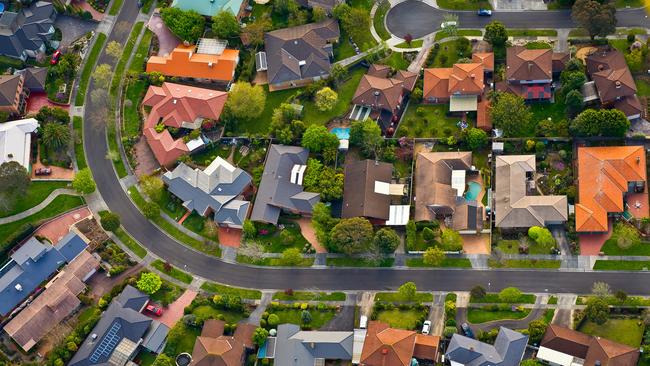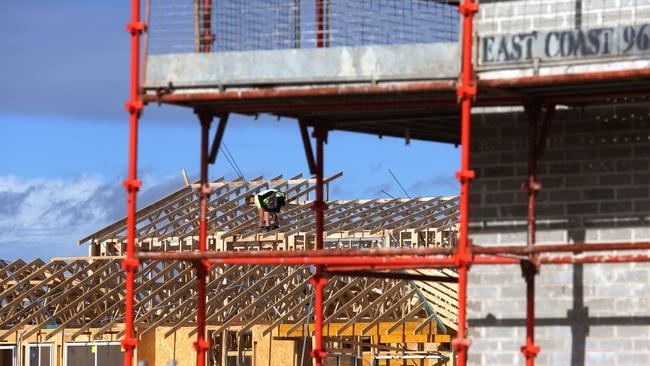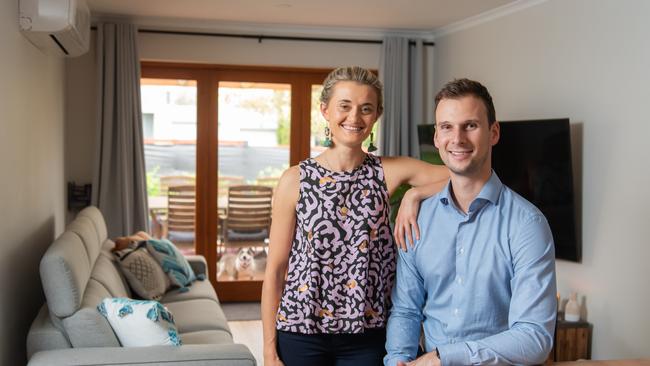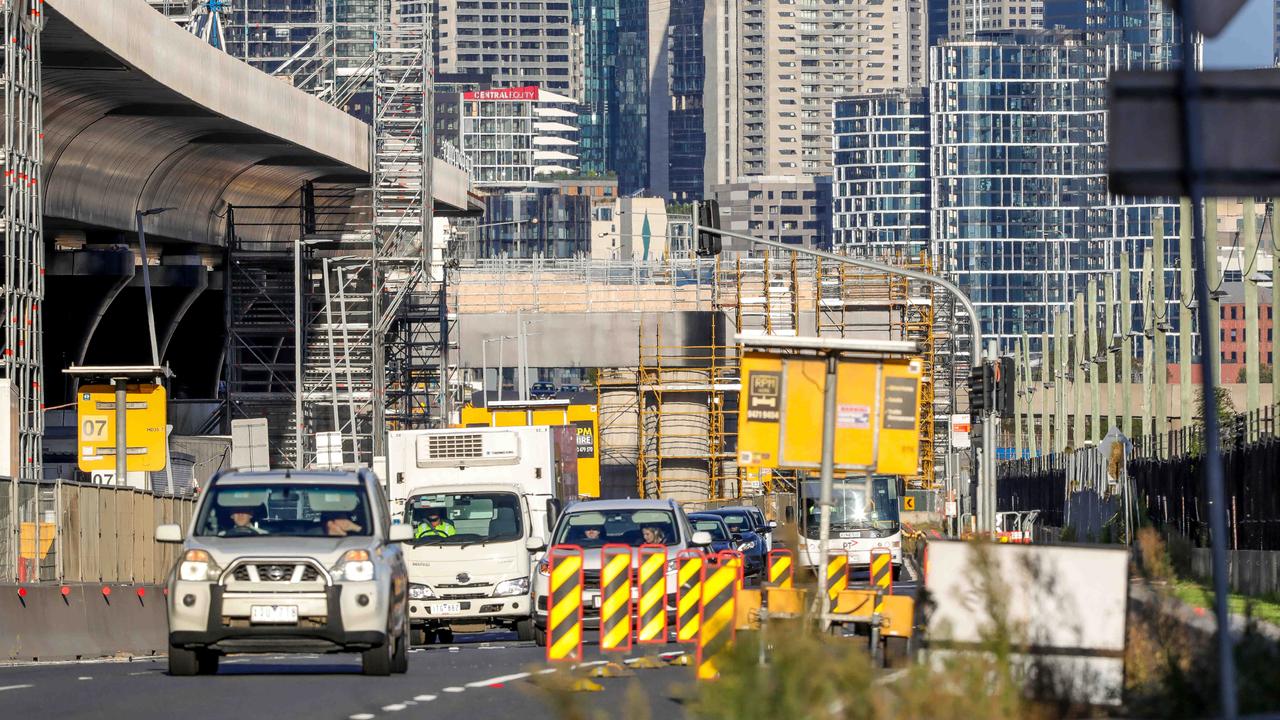Negative gearing: Proposed changes take political centre stage
As Australia’s housing market goes into retreat, and with no sign of a rebound anytime soon, arguments over negative gearing are only going to get louder in the lead-up to next year’s election.

News
Don't miss out on the headlines from News . Followed categories will be added to My News.
Having lain dormant since it was released three years ago, Bill Shorten’s proposed changes to negative gearing have suddenly jumped right on to the centre stage of Australian politics.
With four months to go until the next federal election and trailing in the polls, the Morrison Government is convinced Labor’s plans for the tax rule — which allows property investors to offset losses incurred by their real estate against their gross taxable income — can be turned into a big negative for Labor.
MORE: IT’S CRUNCH TIME ON NEGATIVE GEARING
BOTH SIDES OF POLITICS PUT THEIR CASE ON NEGATIVE GEARING
Treasurer Josh Frydenberg is leading the charge, regularly declaring a variation on the line “anyone that owns their own home under Labor’s policy, their home will be worth less; anyone that rents their home under Labor’s policy, they’ll pay more”.
But far from backing away from his policy, the Opposition Leader is doubling down, recently saying: “I just don’t see it as fair that a first-home buyer — perhaps people in their late 20s or early 30s — go along to bid at an auction against someone who’s getting a taxpayer subsidy.”

At present, if you own an investment property, whether a flat, house or commercial premises, if the amount of income it generates in rent is less than the amount you spend on maintenance and mortgage payments, those losses can be deducted from your personal gross taxable income.
Labor’s proposed changes would restrict tax deductions for mortgage payments to newly built properties. Existing houses, flats and commercial premises would be excluded from the scheme.
Landlords would still be able to offset maintenance and mortgage costs against rental income. Indeed, under Labor investors would be able offset these losses against income from any other properties or assets such as shares.
The changes would also be “grandfathered”, meaning existing negative gearers won’t be affected by the change.
The date from which the new regimen would apply was until recently thought to be July 1. But earlier this month, Mr Shorten left the door open to a start date of July 2020.
So why has the policy, which has been around since before the last election, moved to the centre of the political debate in the lead-up to next year’s election?

The answer is the current downturn in the property market. Labor’s policy was written at a time when the housing market was going gangbusters in both Melbourne and Sydney, and housing affordability was a hot-button topic with voters.
Today, it’s in retreat. Melbourne house values will drop by an estimated 6 per cent this year — more than any other Australian capital, according to forecasts this month by Moody’s Analytics Australia and Corelogic.
That adds to a 9.1 per cent fall recorded since the city’s housing market peaked in December 2017.
The government’s argument is Labor’s policy would make the downturn worse because abolishing negative gearing on existing homes would take those investors out of that market.
It has also been at pains to stress negative gearing is not just used by the rich. Mr Frydenberg frequently quotes the fact that two-thirds of the roughly 1.2 million negative gearers claiming the deduction have a taxable income of under $80,000 a year.
Opponents of the scheme claim this figure is misleading because it reflects income after tax deductions. If, instead, you look at gross income, roughly half of negative gearers have incomes under $80,000.
One of the government’s other attacks is that despite Labor’s pledge to grandfather existing negatively geared properties, current investors would be hit because the party was also committed to cutting the capital gains tax discount.
At present, any profit from the sale of an asset that has been owned for more than a year is halved for taxation purposes. So, for example, if a negative gearer makes a profit of $100,000 on a house they own, only $50,000 of that money is added to their gross taxable income.
Under Labor, in this example the seller would have to add $75,000 from the sale to their gross taxable income.
The government argues that between them, Labor’s changes to negative gearing and capital gains tax would make rents higher.
It argues landlords would be forced to charge higher rents as they were no longer able to offset losses from their property against other income.
It also argues rents would rise because investors would be more focused on extracting rental income from their properties because of the increase in capital gains tax they would have to pay when they eventually sold it.

The impact of Labor’s proposed changes on rents and property prices is hotly disputed and not just by the government and Opposition.
On one side are those like the Property Investment Professionals of Australia and the Property Investors Council of Australia which say the moves would “decimate the property market”.
The Master Builders Association is also against the move. It released modelling in October which claimed that over five years, the changes would mean up to 42,000 fewer new dwellings being built across the country, 32,000 fewer full-time jobs, $11.8 billion in less building activity and $210 million less renovation building activity.
Others dispute the impact.
Labor points to the fact that negative gearing has been declining in popularity for some time.
According to data from the Australian Taxation Office, 13.4 per cent of taxpayers were negatively gearing in 2013.
By 2016, this had dropped to 9.6 per cent.
The downturn is only going to accelerate the trend.
Negative gearing was at its most attractive as a way of making money when property prices were booming.
Given there is no sign the property market will rebound anytime soon, the arguments over negative gearing are going to get louder and louder.
The government will continue to argue that Labor’s changes will hit both homeowners and renters and Labor will continue to spruik its changes as a way of fixing housing affordability.
CHANGES TO PUT LID ON PRICES
Stephen Drill
Young home owners Jacob Hitchiner and Yana Robertson say Labor’s proposed negative gearing changes will help them buy their “forever home.”
The couple own a unit in Bentleigh East but want to upgrade for when they have a family.

“We were bidding on a property at Safety Beach but we were beaten by a developer, he came in and went over the top of us,” Mr Hitchiner said.
“I do think the changes to negative gearing would help because I think the market is about 50 per cent investors so we wouldn’t be competing against as many investors.”
The Safety Beach home they were looking at had four bedrooms, which has become rarer and more valuable as many single homes in the suburbs have been replaced with units or apartments.
Mr Hitchiner said that Labor still needed to win government next year, despite the positive opinion polls and the landslide victory the party had in Victoria.
“There’s no guarantee that Labor will get in and these laws will still nee to get through the Senate,” he said.
But Mr Hitchiner, an accountant, argued that the changes would help keep a lid on prices for wages to catch up.
“We’re looking for value and trying to hopefully buy under market value but there’s a lot of competition in the market,” he said.
“If prices drop it will be an opportunity for us to buy.”
NEGATIVE GEARING CUT TO HURT RETIREES
Investor Phil Defegely has warned that cuts to negative gearing will hurt the economy and force some self funded retirees to the old aged pension.
Mr Defegley, 58, owns three apartments in Melbourne’s inner eastern suburbs, which he purchased and maintained with the help of the current tax rules.
He said that the market had cooled since Labor first announced its planned changes.
“We have three apartments, in St Kilda, Elwood and Windsor. They’ve always been rented out. Are we rich? No,” he said.
“We have them because we want to supplement our income in retirement and the negative gearing helps that.”

Mr Defegley, who also works as an auctioneer, said that investors were already being taken out of the market because of changes to lending rules.
Interest only loans have become harder to get and required deposits have gone up, leading to clearance rates hitting decade lows of 45 per cent.
Mr Defegley said he accepted that Labor would grandfather the changes to stop them hurting people who already had the tax cuts.
Frank Valentic, director of Advantage Property, said that he expected Labor would stick with its cuts to negative gearing.
He said first home buyers and second home buyers would be the winners, but investors and renters would lose.
“The losers will be tenants because if its like it was in the late 80s when negative gearing was cut rents will sky rocket,” he said.
“Tenants will be the hardest hit if vacancy rates drop. A balanced market is three per cent and if this comes in it could go to one or 1.5 per cent.”
Mr Valentic added that changes to the residential tenancy act, which allow renters to default on payments five times instead of two, would also make investing less attractive.



